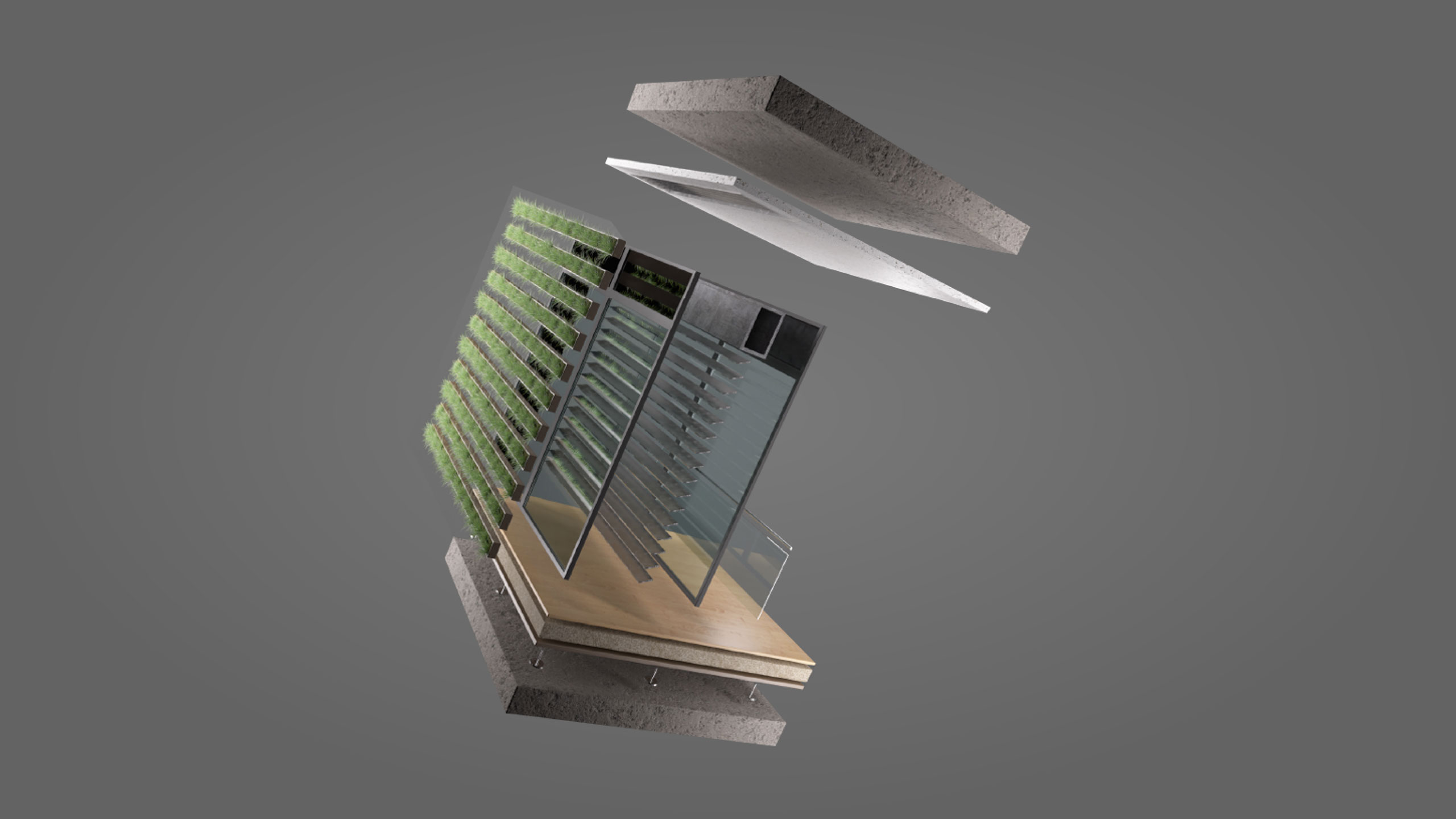High-resolution dynamical wall and roof model
#climateresearch, #climatesolutions, #envimet, #environmentalscience, #greenroofs, #greentechnology, #sustainablecities, #urbanclimate, #urbanmodellingWe are pleased to announce the release of our new report, „Development and Implementation of a High-Resolution Dynamical Wall and Roof Model for ENVI-met.“ This report summarizes several years of development efforts and provides a detailed explanation of the underlying philosophy behind ENVI-met’s wall model. Due to its complexity, the report has been divided into two parts: Part 1, which focuses on simulating non-vegetated walls and roofs, and Part 2, covering all aspects of wall and roof greening, which will be introduced next week.
About the Report:
Accurately simulating thermal processes occurring at building walls and roofs, including the potential inclusion of attached greening layers, is a fundamental prerequisite for modeling both outdoor microclimates and internal building physics. It determines not only the façade surface temperature, which acts as an interface with the urban atmosphere, but also the energy exchange with the interior of the building, contributing to indoor heating and cooling demands.
The goal of our report is not only to present the mathematical equations used but also to elucidate the complexity of the problem and how ENVI-met effectively addresses these challenges while maintaining accuracy, flexibility, and user-friendliness. To achieve this mission, the first part of the report describes the general structure of the ENVI-met wall model, the basic heat transfer equations, and offers insights into the numerical solutions for these equations. The second part will delve into the effects of various greening techniques and include a comprehensive discussion of radiation transfer processes within vegetation layers. As such, this report serves as a valuable resource not only for ENVI-met users but also for readers seeking to understand how partial differential equations transition from theoretical descriptions on paper to computational implementation.
Evolution of Building Wall Modeling:
Throughout the development of ENVI-met, the modeling of these processes has undergone numerous changes and improvements. Advancements in computer resources have played a pivotal role, allowing for refinement in both the spatial resolution of the wall model and the inclusion of additional processes. For instance, early versions of ENVI-met (up to V3.1) were compatible with high-end computers running on PENTIUM 4 processors with only 512 Megabytes of memory, limiting simulations to steady-state solutions of wall temperatures. As CPU power and memory availability increased, a transition to transient solutions for wall heat transfer became feasible, initially with 3 nodes (V4.0) and eventually employing a 7-nodes model (since V4.2). This increase in calculation points not only improved the resolution of heat transfer processes but also enabled the simulation of more realistic building walls composed of three different material layers.
The Impact of Green Solutions:
In recent years, in response to global climate change and growing awareness of the influence of buildings on local climates, various wall and roof greening techniques have emerged as tools to mitigate the urban heat island effect and enhance building energy performance. These techniques vary in how plants are connected to building walls and whether they root locally using a substrate layer or grow upward from the ground soil. The combination of living plants, potentially a watered substrate layer, and a solid building wall creates a complex sandwich system requiring diverse modeling approaches from various disciplines to accurately represent it.
For the vegetation layer itself, simulations must account for the effects on both shortwave and longwave radiation fluxes between the atmosphere and the building system. The plant’s response to solar radiation, air temperature, and wind, including transpiration and sensible heat, contributes to the insulation effect of the greening layer. When a substrate layer is present, a significant amount of vapor flux originates from the substrate itself rather than from the plant leaves. To address this effect, simulation techniques from the hydraulic aspects of soil modeling are employed. Therefore, the second part of the report will also provide an introduction to the soil water system used in ENVI-met.
Both parts of the report conclude with related case studies, demonstrating the effects of different greening techniques (Part 2) or verification using field data (Part 1).
You can now find this report linked in the ENVI-met eLib at https://envi-met.info/doku.php?id=resources:elib or directly at https://envi-met.info/documents/reports/2023_wallmodel_Part1_cover.pdf.
